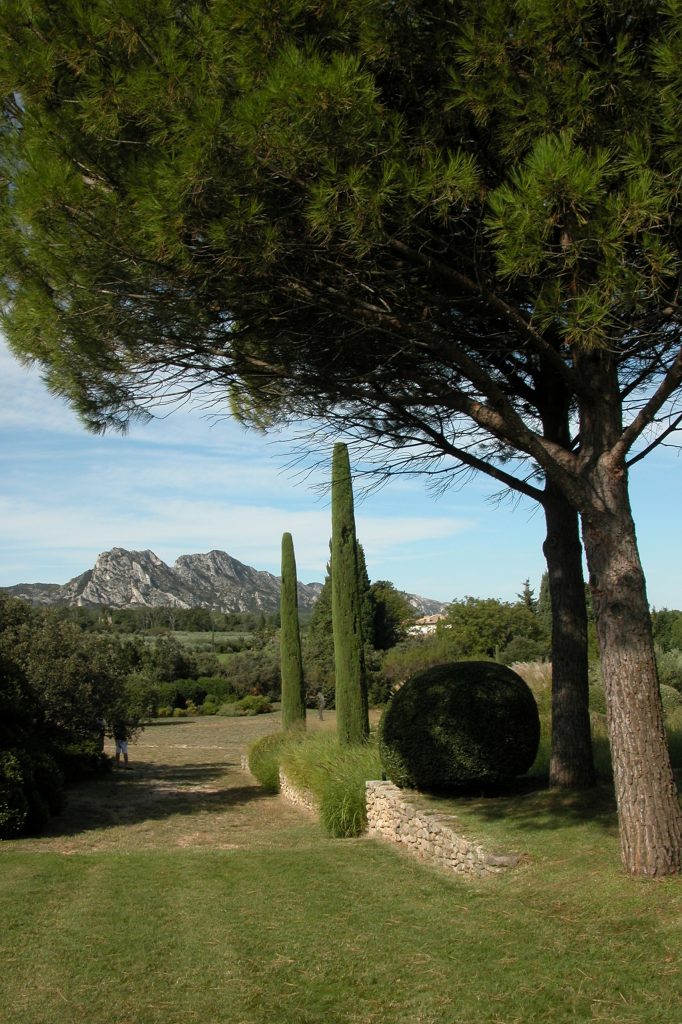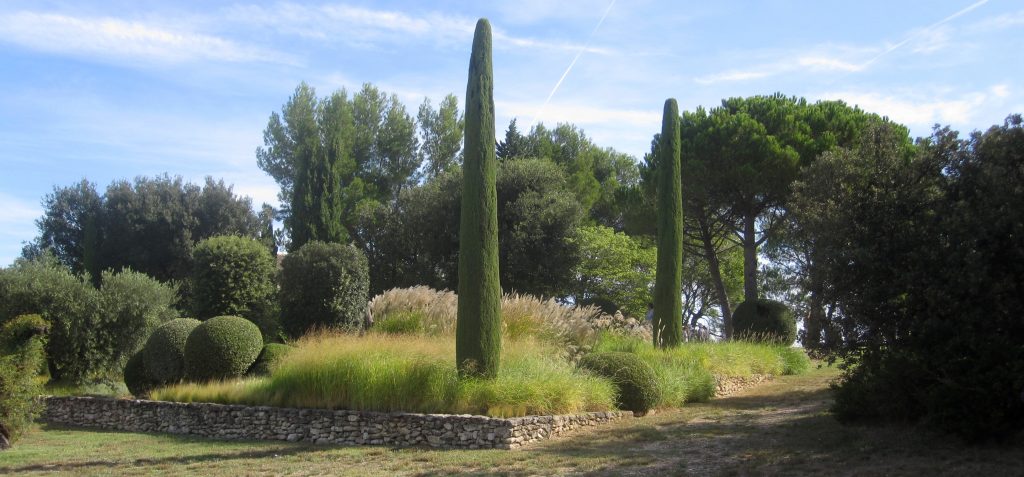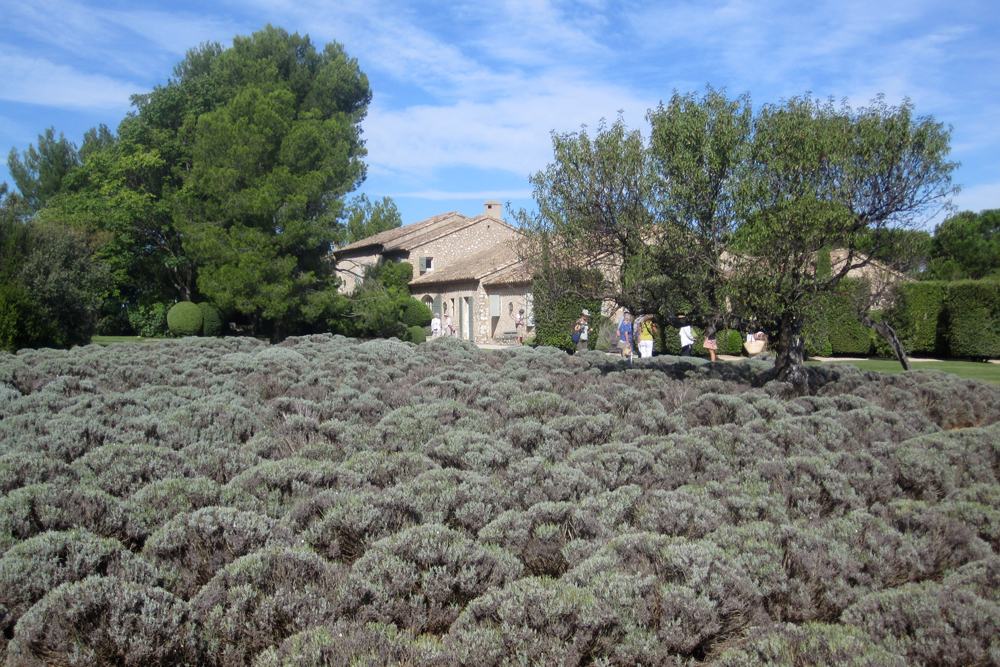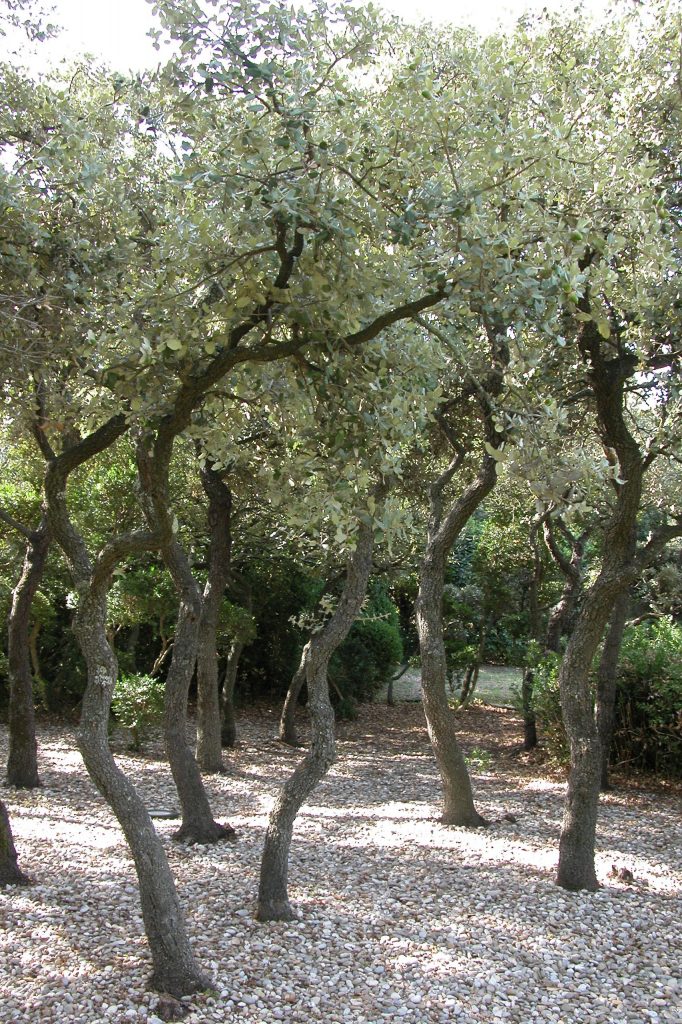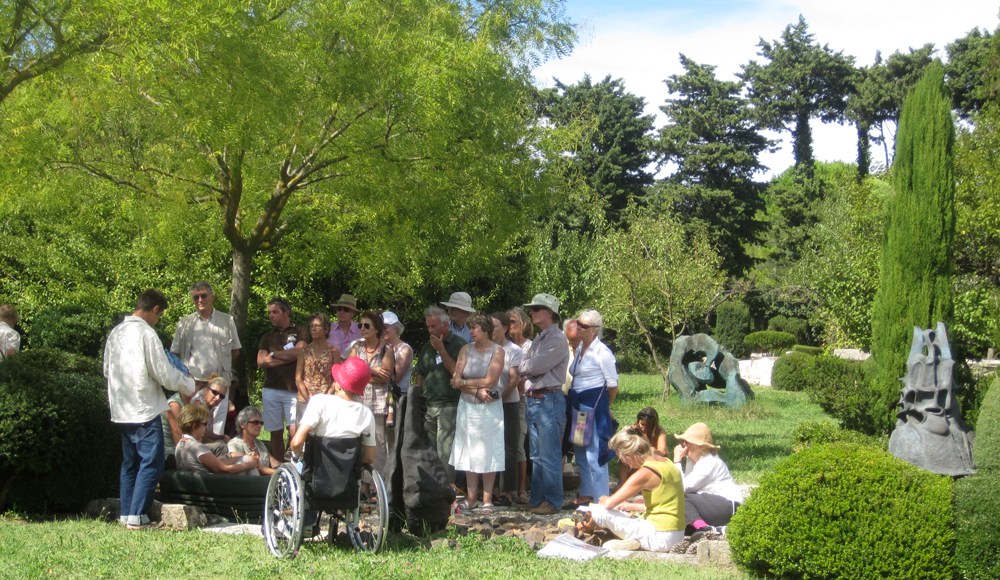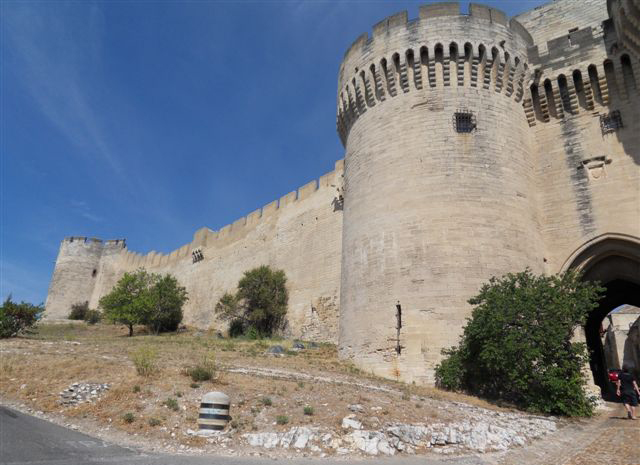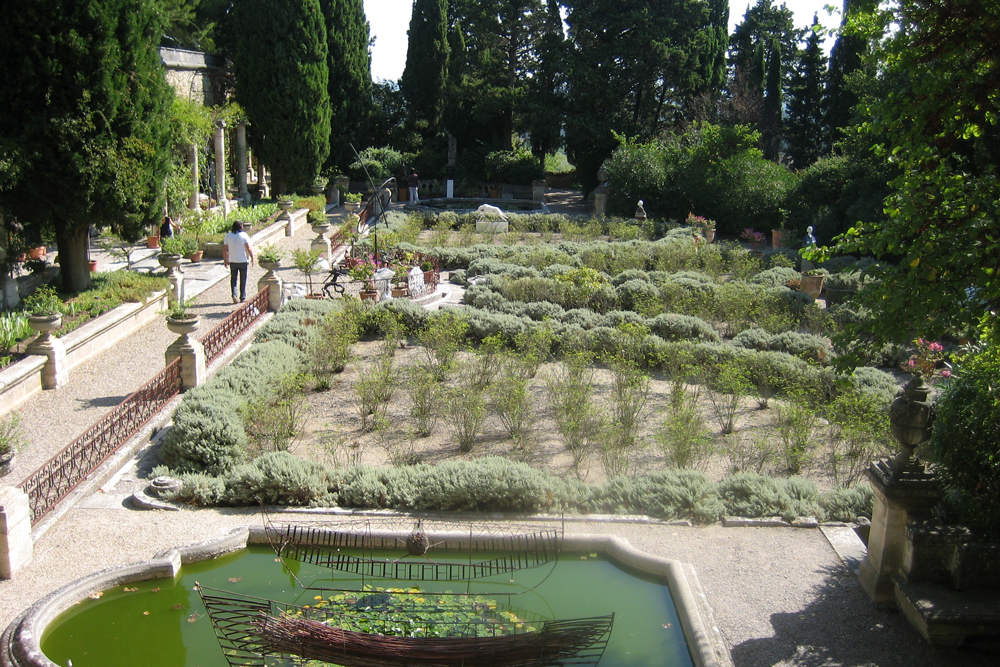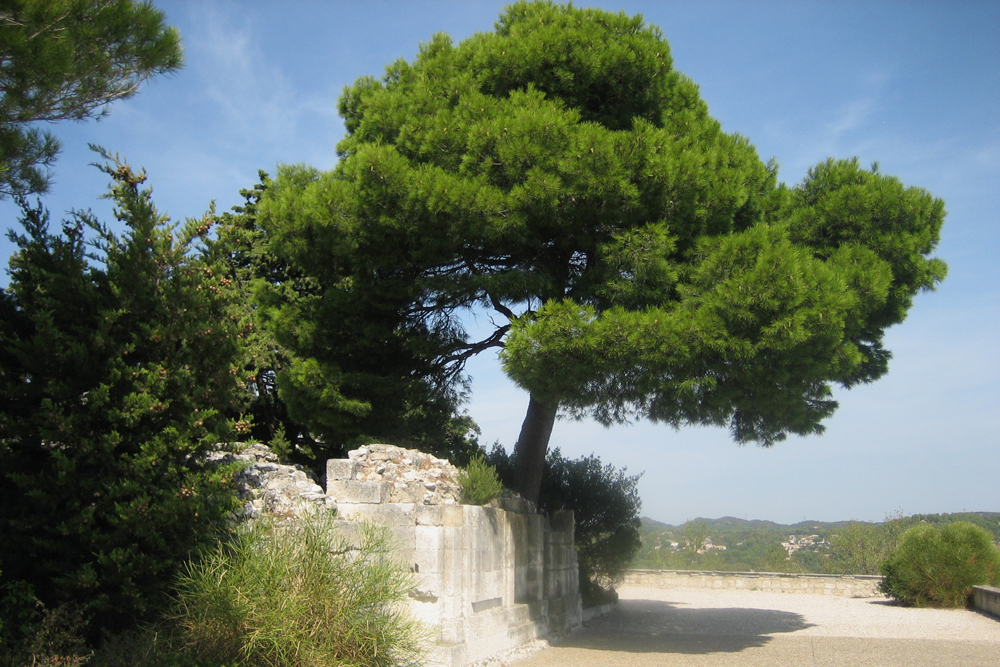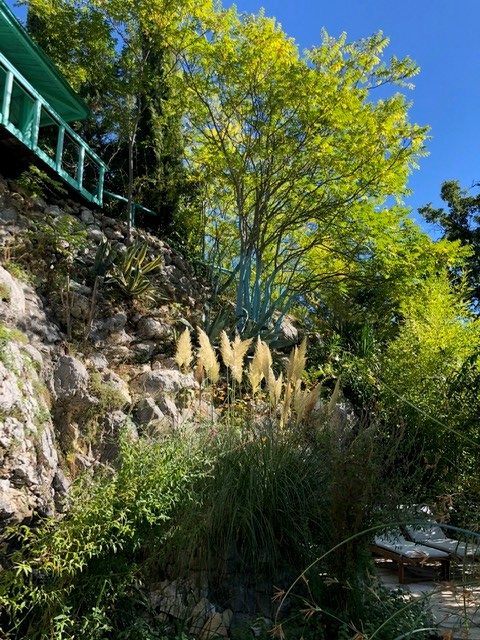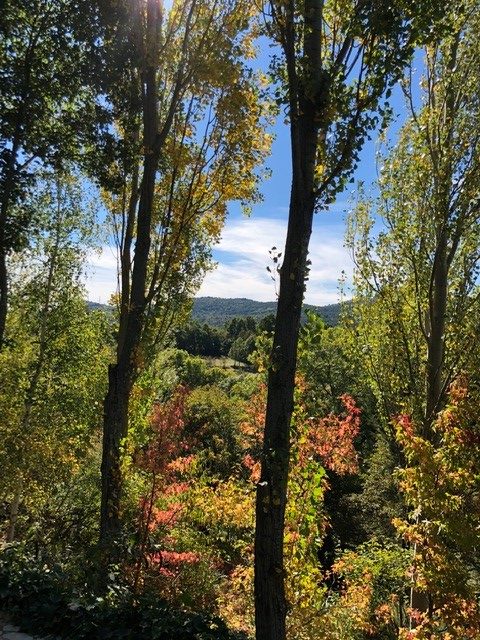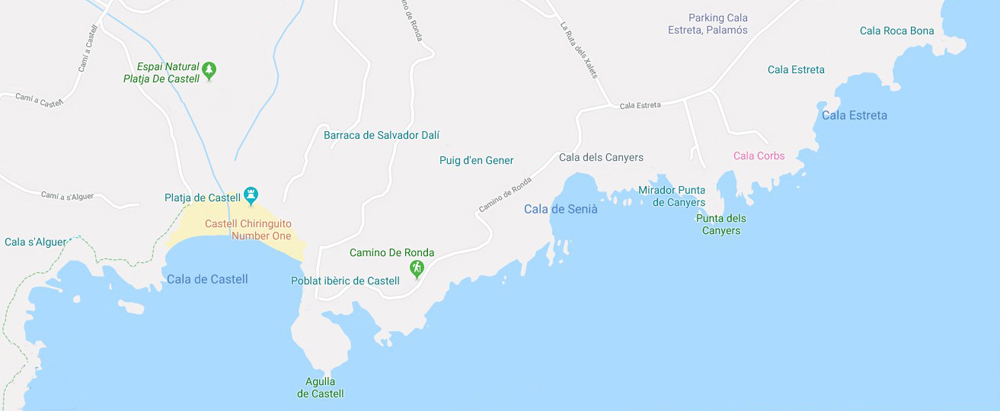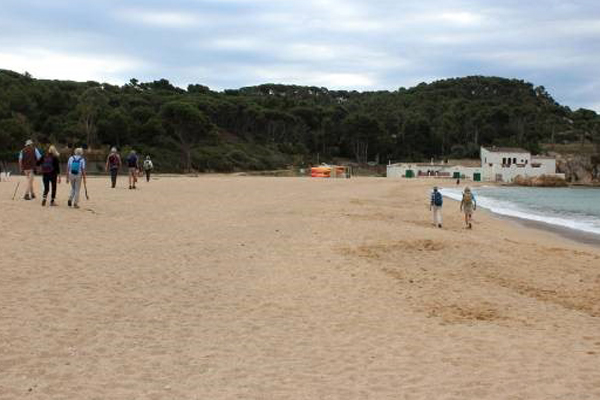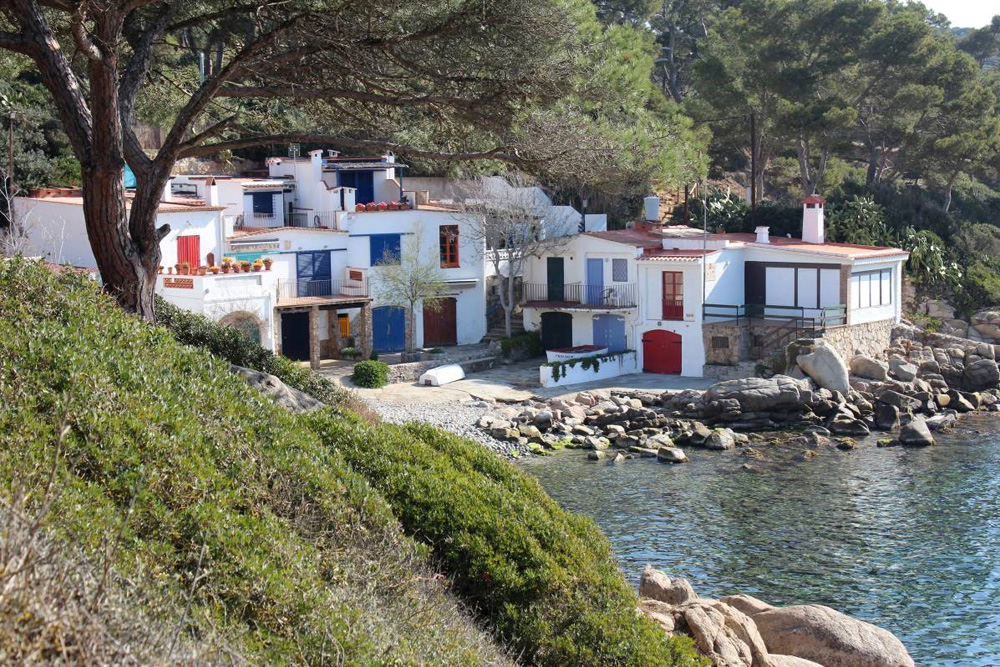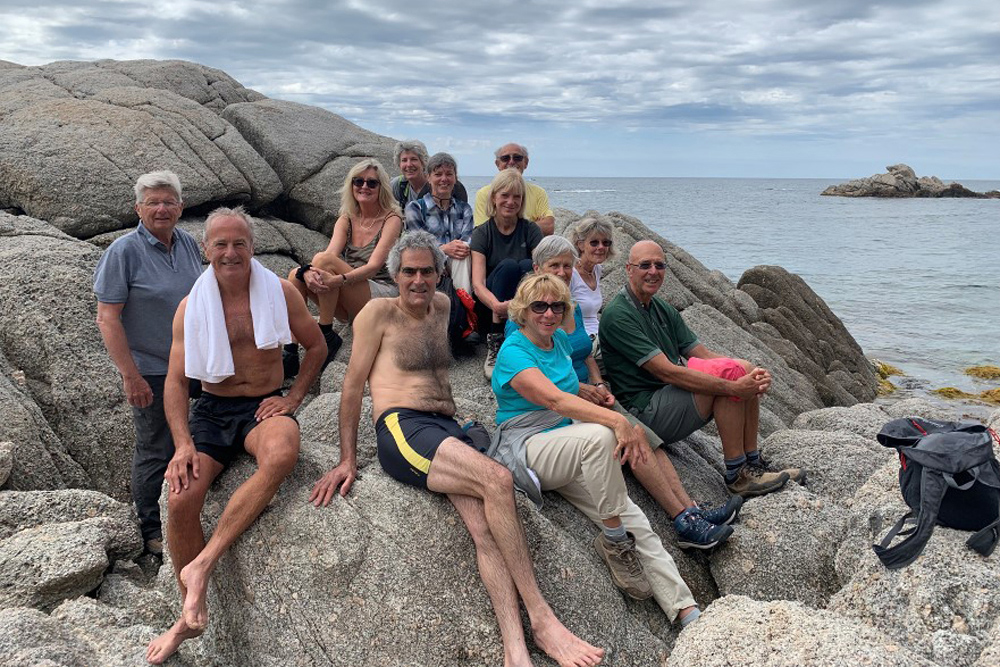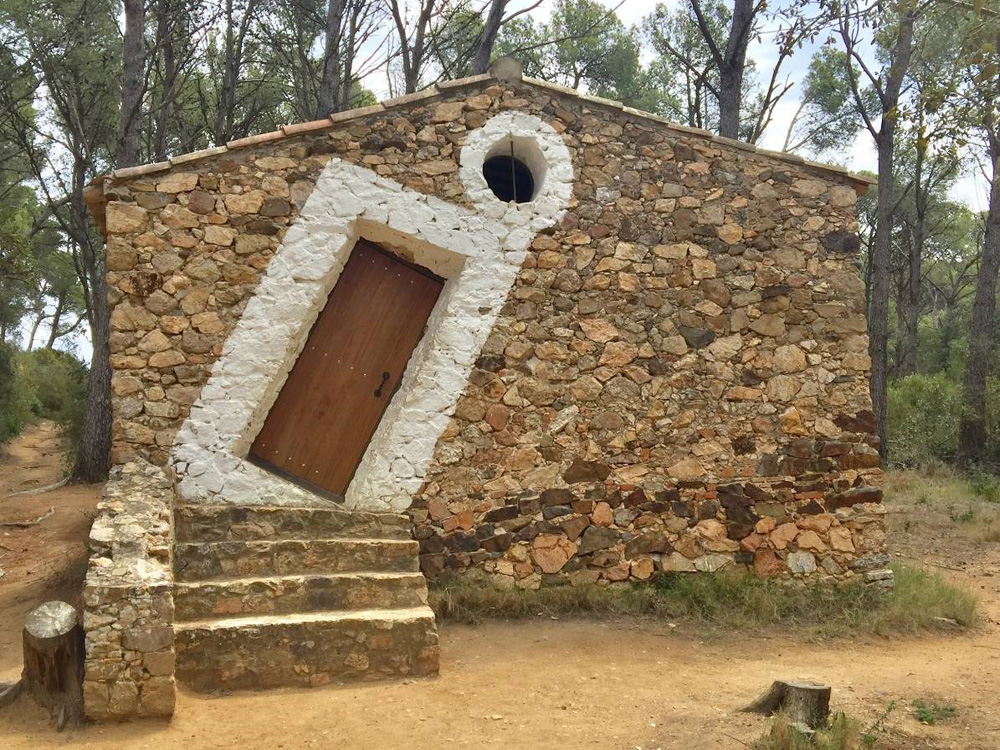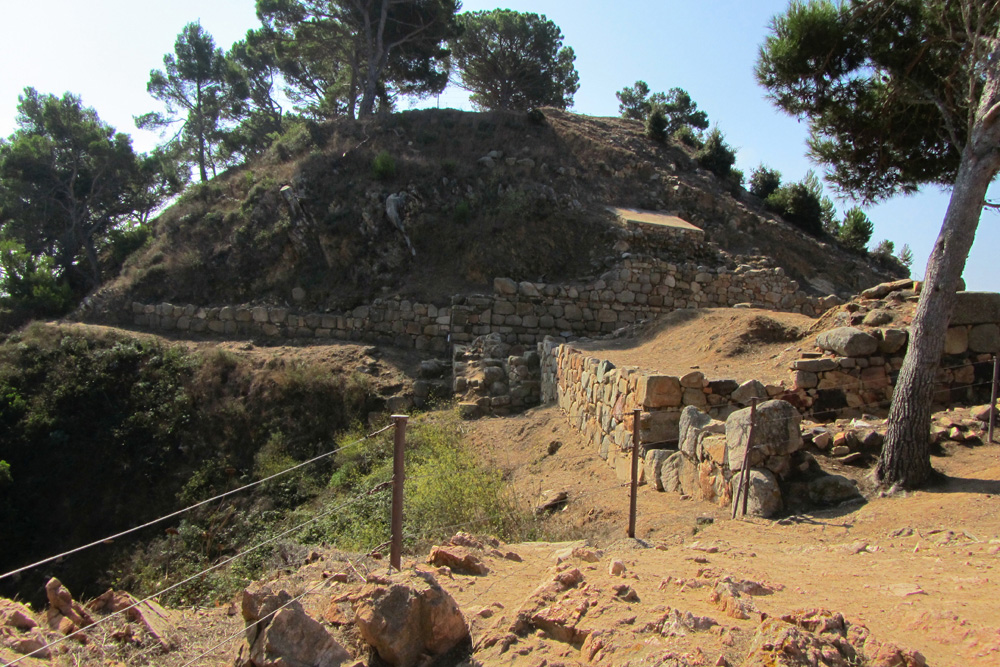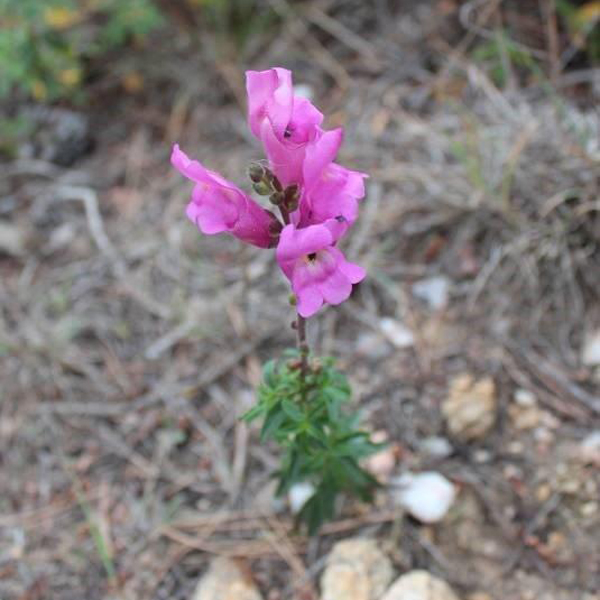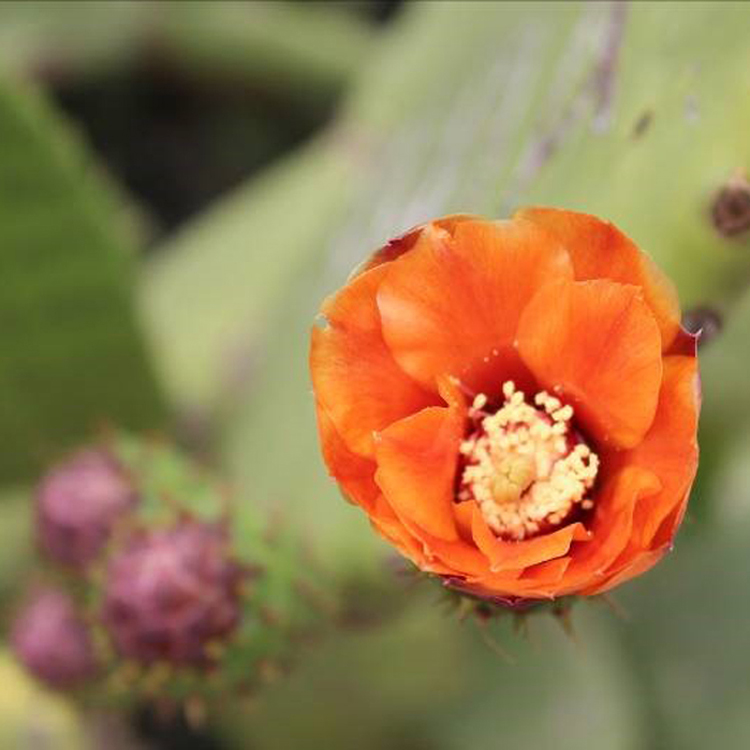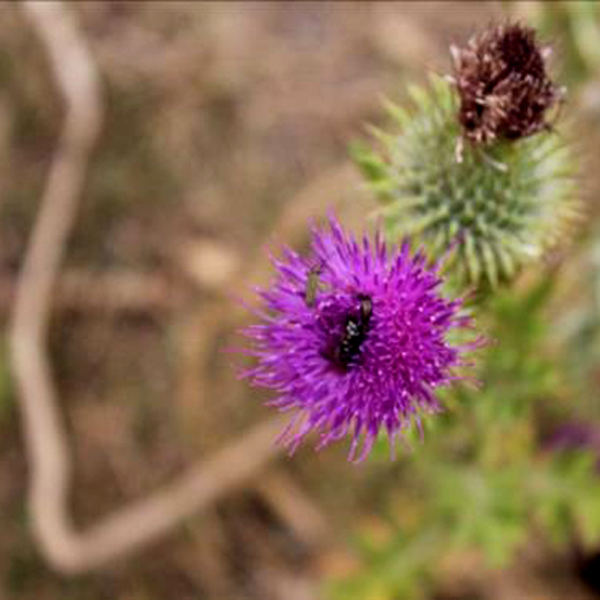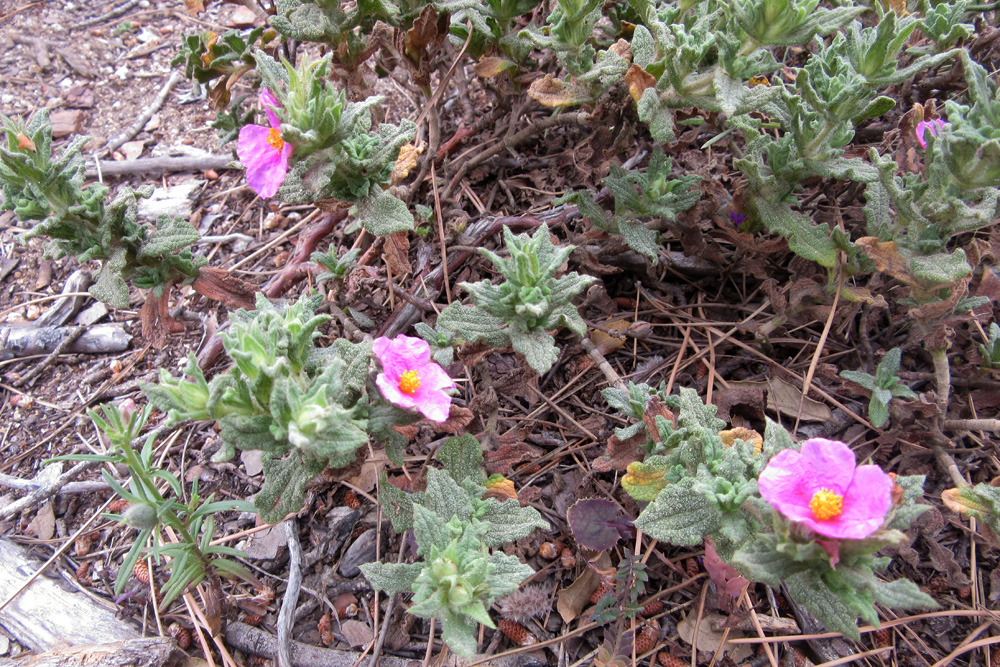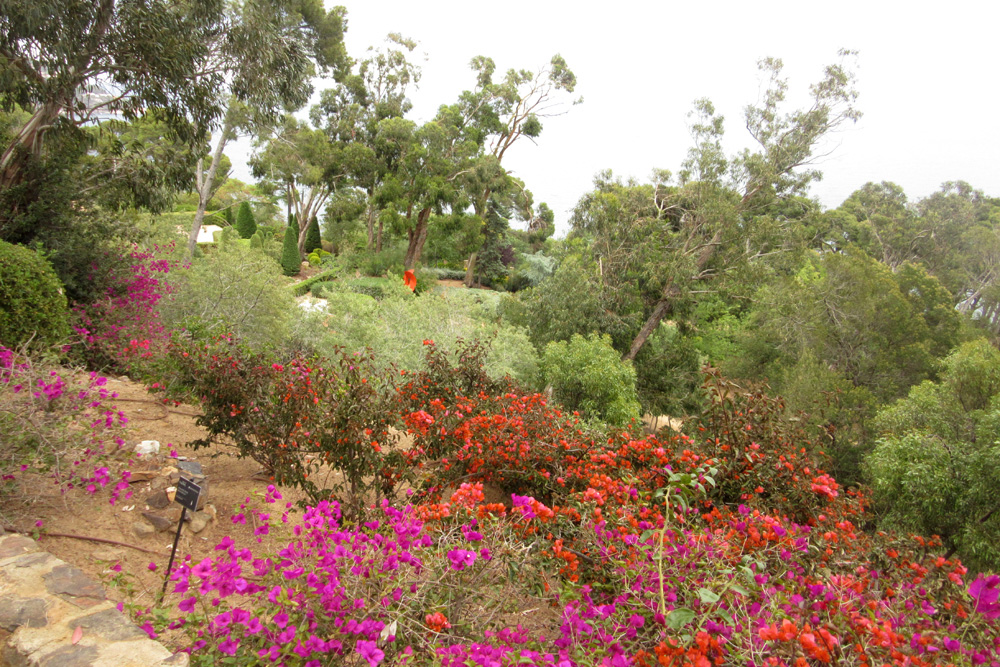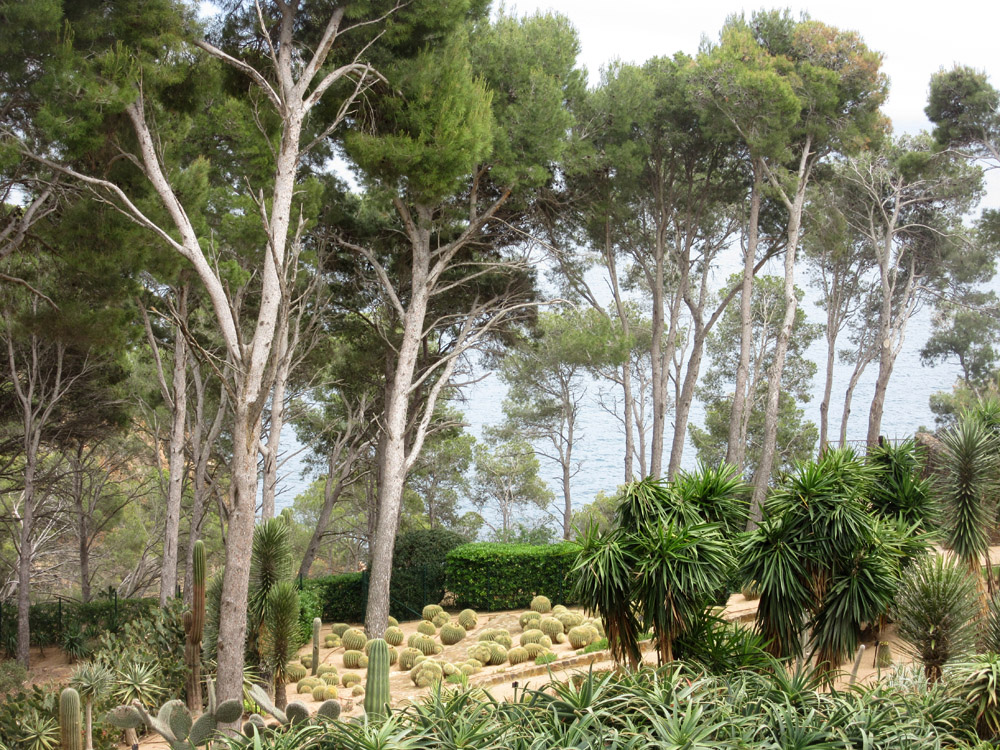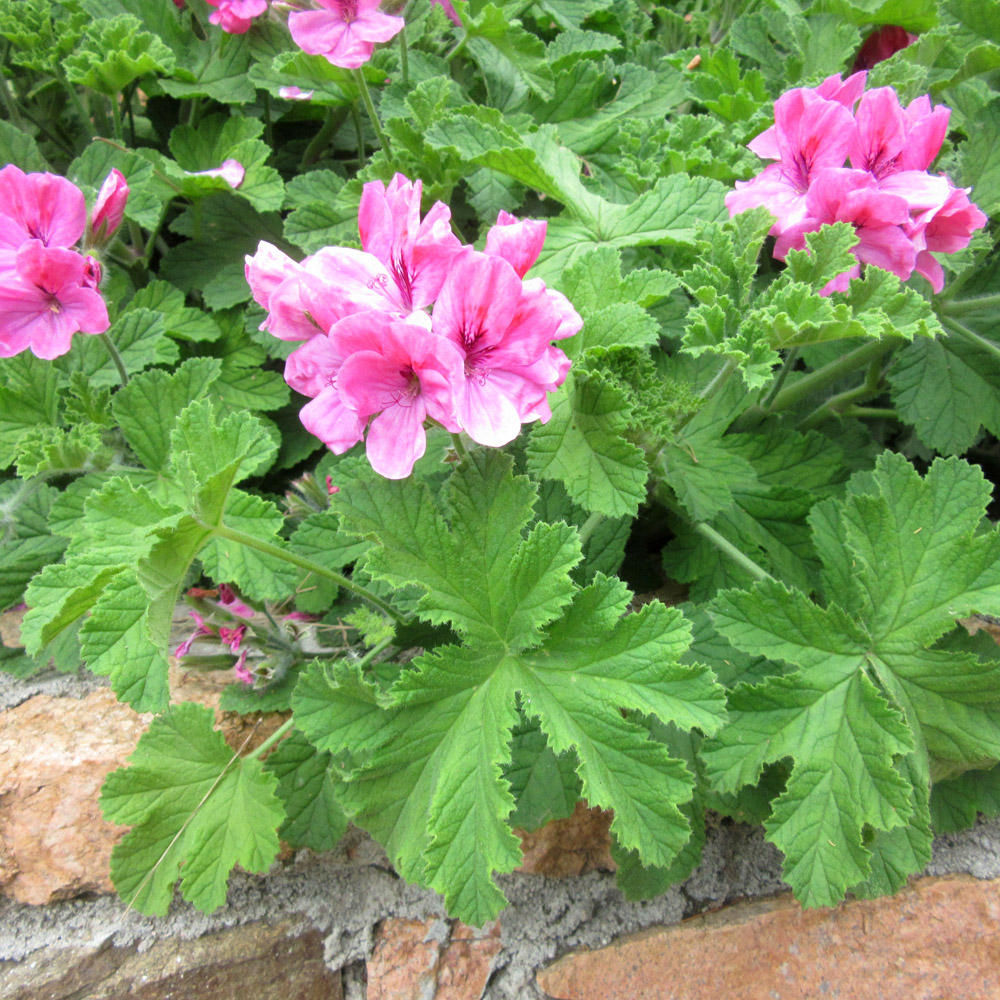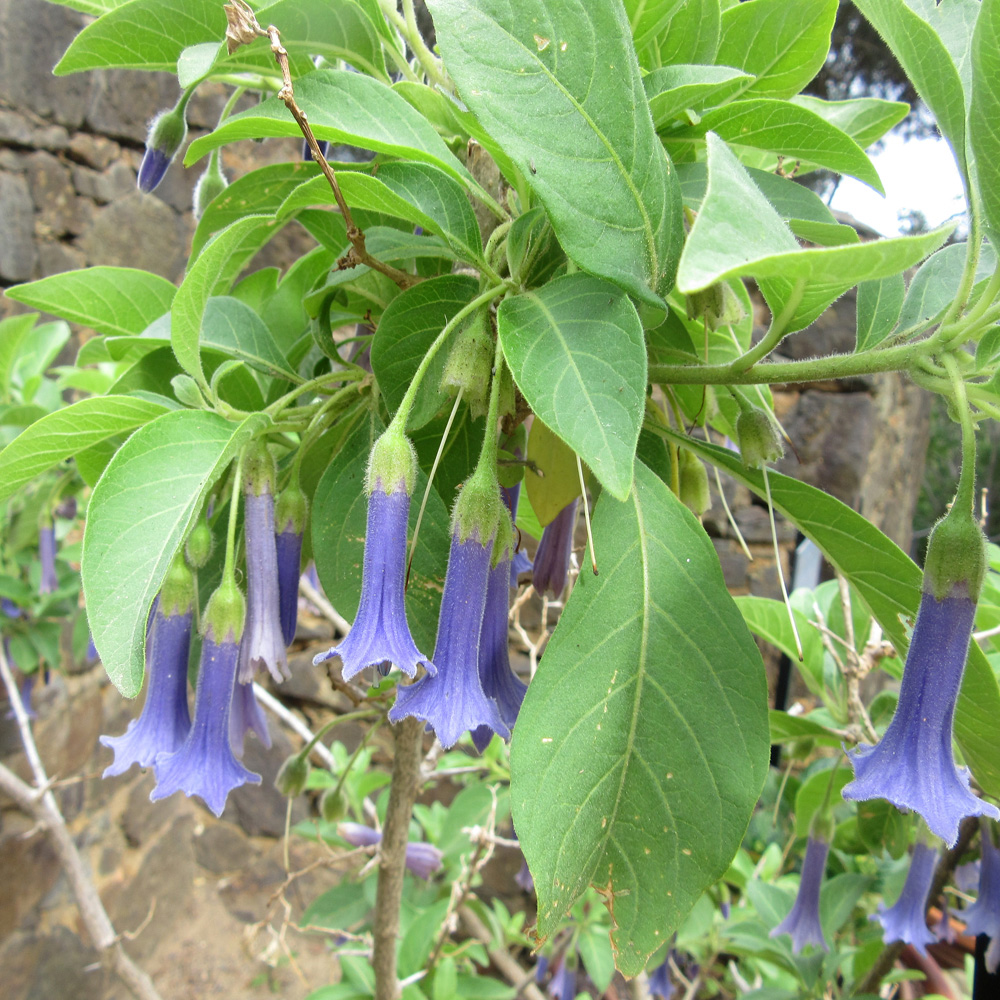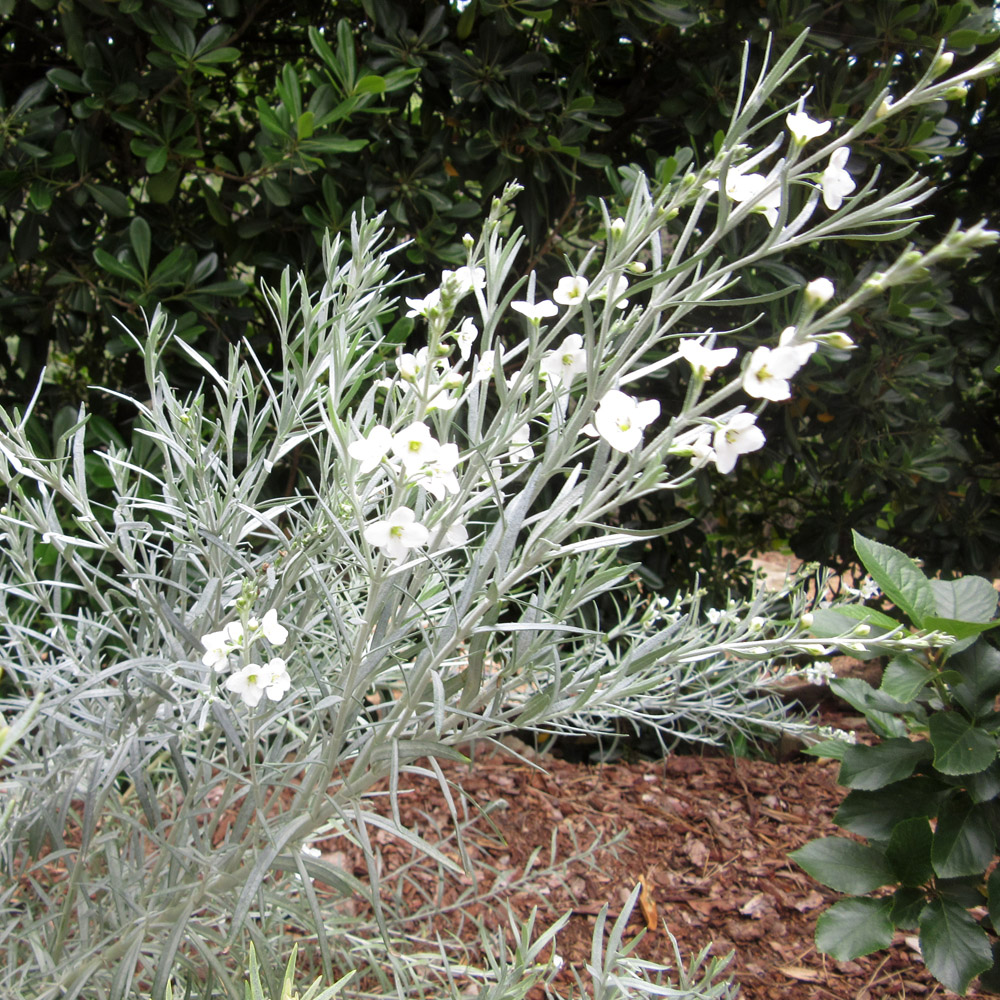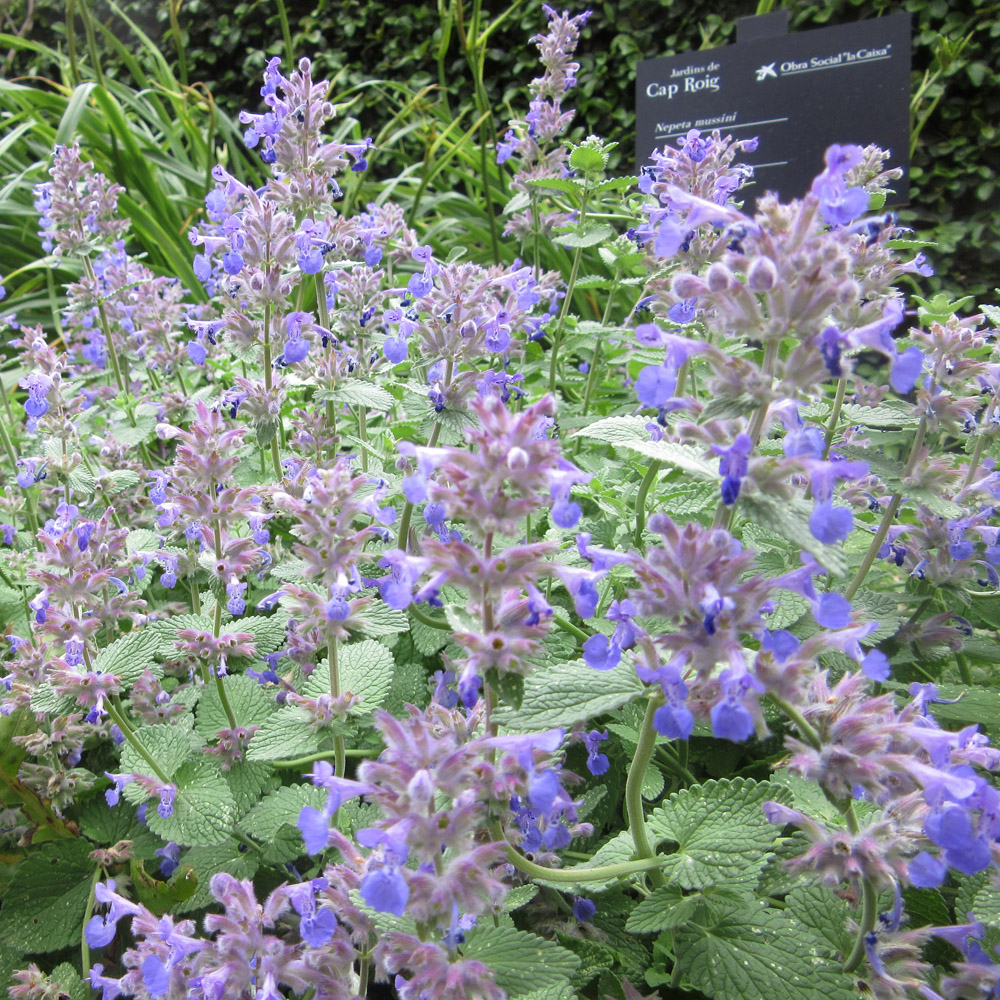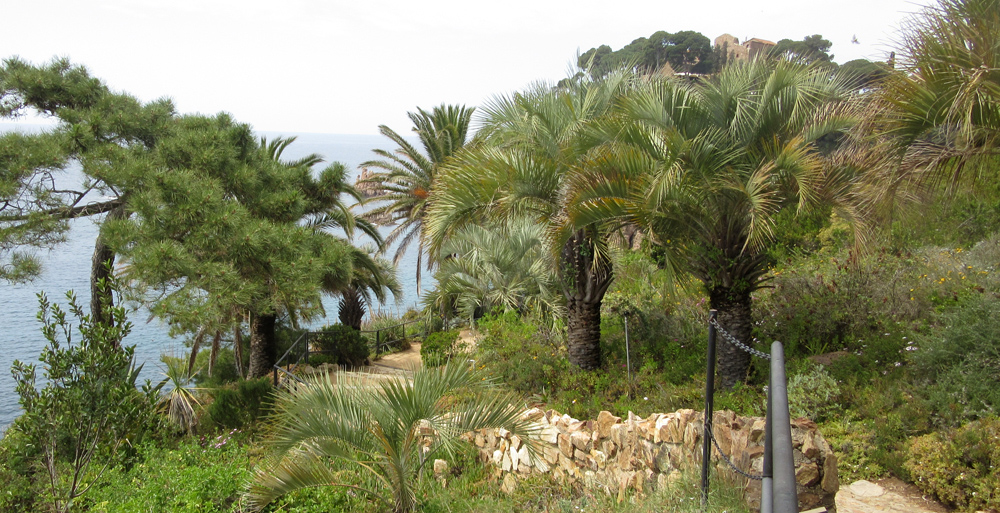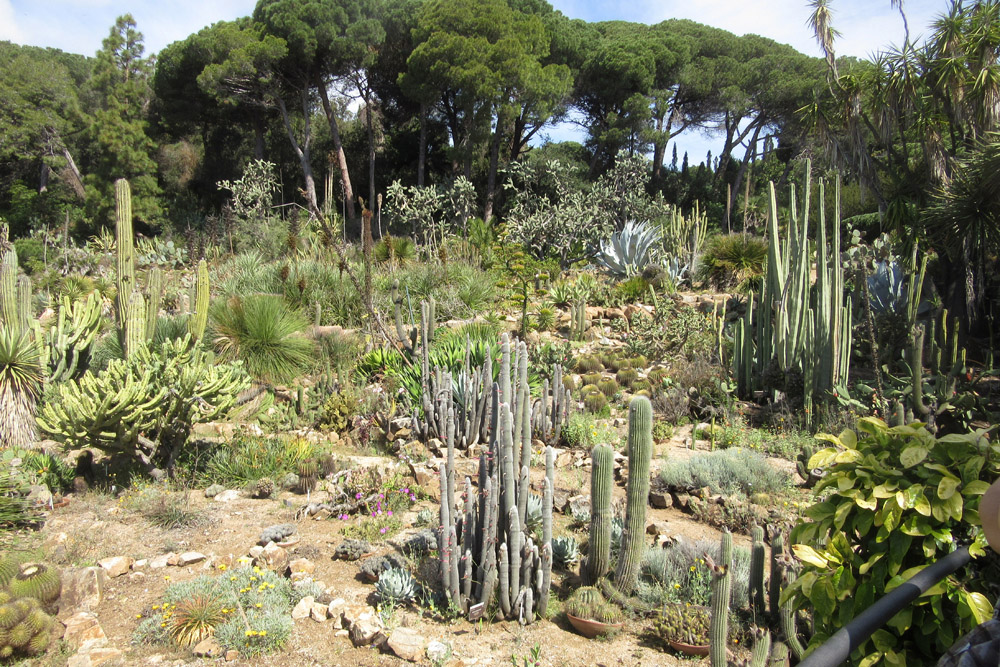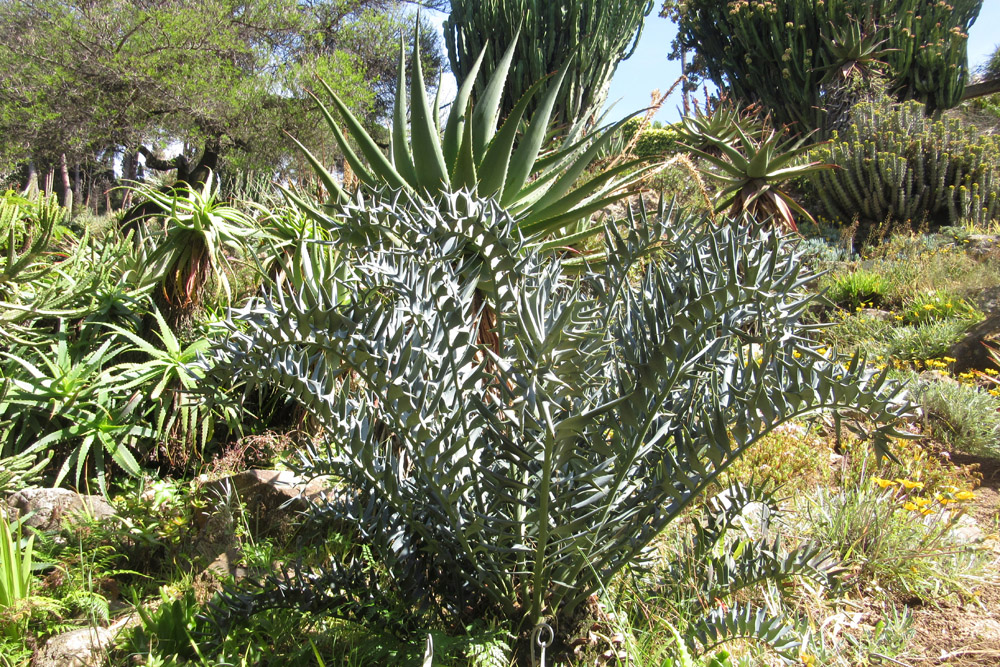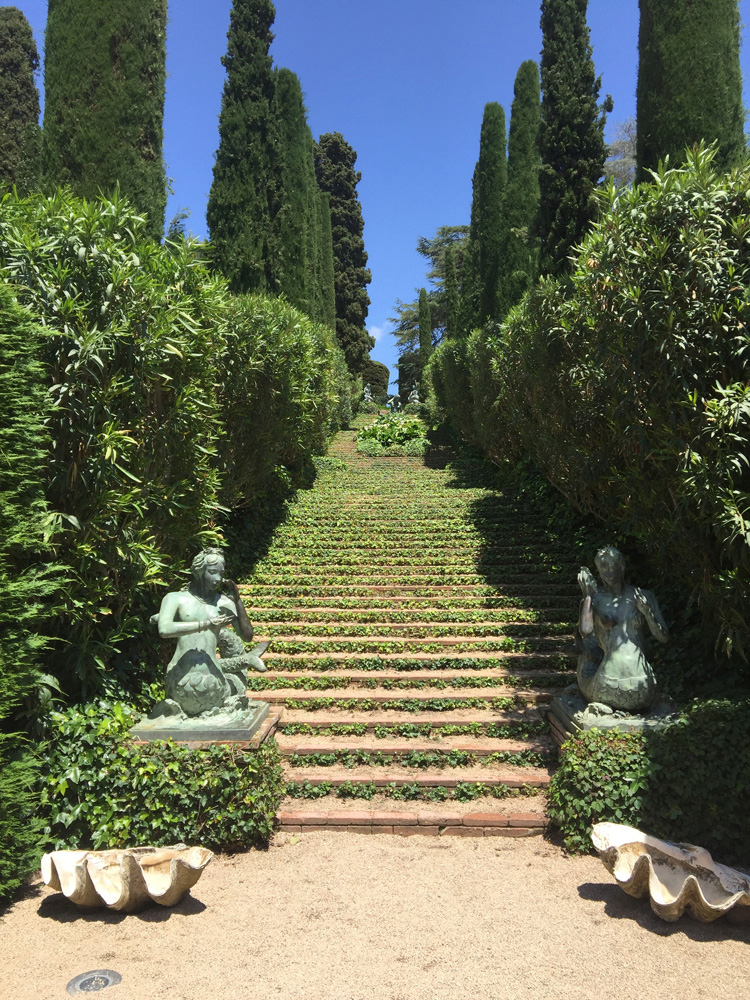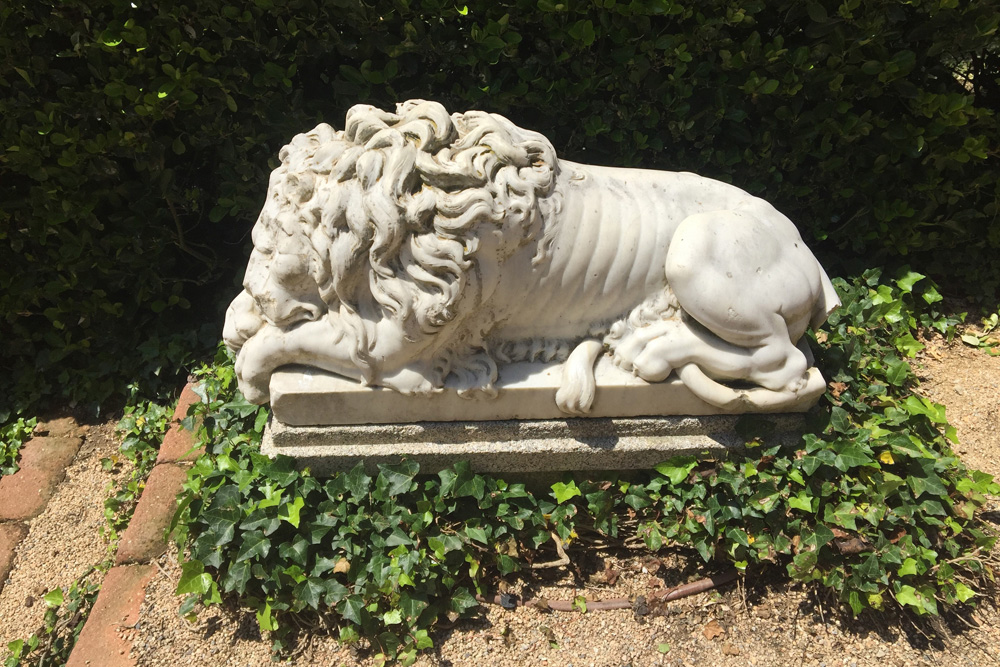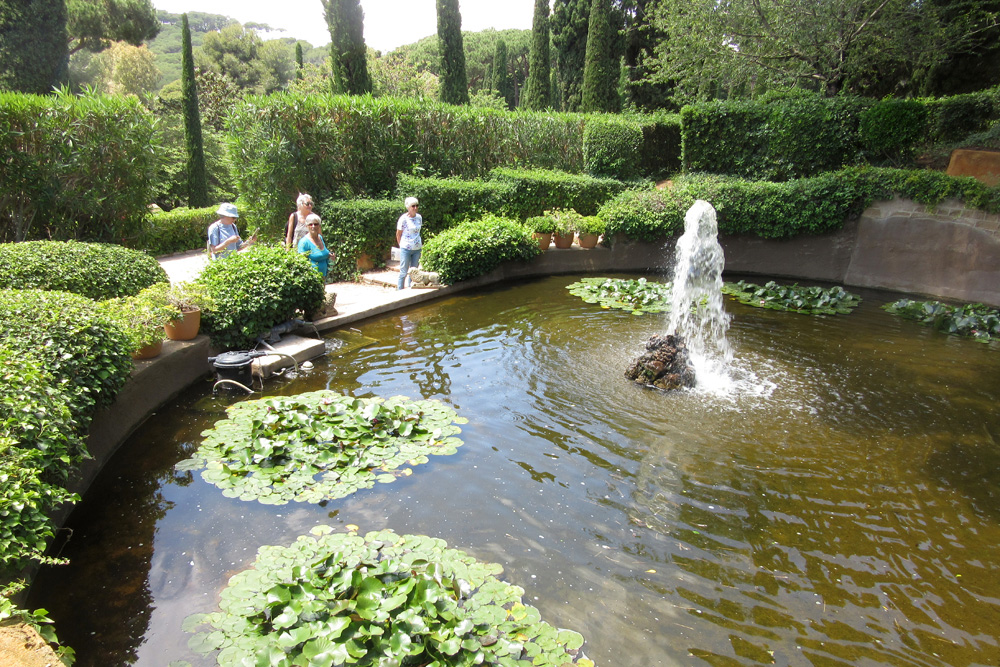September 2011
Visits to gardens in Eygalières and Noves with Marc Nucera, author of ‘A l’écoute des arbres’
On a hot day in early September we were privileged to spend a day in the company of Marc Nucera, renowned tree sculptor. With Marc as our guide, forty-five of us visited the private gardens of Mas Benoît and Mas de Michel, both close to Eygalières, in the foothills of the Alpilles, and his own experimental garden “Le Terrain” in nearby Noves.
Marc started his career as the student and disciple of the professor, sculptor and then garden designer and Land Art practitioner, Alain-David Idoux. Although Idoux died tragically young, he left behind a legacy of ground-breaking design, including that of the beautiful Mas Benoît.
The garden surrounding this traditional Provençal farmhouse or mas lies on a low hill with the magnificent backdrop of the Alpilles in the distance. Lines of sight to the horizon are emphasised by the approach path of grasses and clipped cypresses in the foreground.
The triangular field of lavender was breathtaking and the enchanting copse of Quercus ilex, delicately shaped by Marc, with its stone bench, created a defined space of calm and reflection.
Working with Idoux, Marc learned to adapt and formulate his own style, encouraged also by local garden designers and friends, including Dominique Lafourcade and the legendary Nicole de Vésian.
And so to Mas de Michel, where we saw Marc’s guiding principles in action: adaption to environmental constraints, respect for the subject and harmony of the ensemble. Armed only with a chainsaw (a paradoxical tool for such a calm, natural and Zen man), Marc set out to sculpt the trees – both living and dead – to effect the minimum intervention consistent with bringing out the best in the innate structure of the tree in front of him.
He adopted some simple strategies to open up the land around the mas to create a natural flow of space.
The entrance and driveway to the house were moved from the side of the house to the back and olive trees were re-sited into the middle distance to throw the eye towards the horizon, whilst at the same time becoming part of it. A border of pebbles was added around a terrace so that it became proportionate to and balanced the façade of the house behind: a simple and elegant device.
Gravel or stone platforms around the base of certain tree trunks subtly highlighted the carefully considered and tactical pruning. Other astonishing pruning of a box hedge produced breath-taking results.
Marc’s work encourages the visitor to look at the garden in new ways, literally. We enjoyed descending into a viewing pit sunk into the wild flower meadow to sit on seats at the same height as the adjoining soil surface, the better to appreciate being amongst the grasses and flowers.
Then we climbed up on to a simple viewing platform to look down on the old almond orchard, only to find our eyes being drawn towards the previously hidden view of the magnificent Mont Ventoux in the distance.
After a shared picnic lunch in Marc’s own experimental garden “Le Terrain” in nearby Noves, we marvelled at his sculptured hommages to Hans Arp, Constantin Brancusi and Louise Bourgeois and he explained to us what he was seeking to achieve with his work.
He “intervenes” with his trees to enhance them and to highlight their best features to enable them to be read more clearly within the landscape in which they are set.
Marc talked of his veneration and respect for all trees – not just living trees but those that are in the process of dying, or which are now dead. He has spent many years saving some of the centuries-old trees “les patriarches et les remarquables” of Provence.
But when these ancient trees have finally died, he has kept their hearts, literally. Taking wood from their core, he sculpts huge cubes, often into benches and chairs so you can sit within the very soul of a tree that took hundreds of years to grow.
To transform a dead tree into a work of art is a way of continuing its cycle. In giving it a new form, there is rebirth. Examples of Marc’s extraordinary and thought-provoking work in his own garden and at Mas Benoît, Mas de Michel, La Verrière, La Louve and other gardens in our area can be admired in his book “A l’écoute des arbres” with a foreword by Louisa Jones (published by Actes Sud). Tou can borrow this book from the MGF library.
It is not often that a garden visit enables us to contemplate our own mortality so vividly: this was a special day when we did so and it will not be forgotten by those who were there.
Text: Sara Robinson
Photographs: Sara Robinson, Christine Savage and Jolene Telles
![]()

